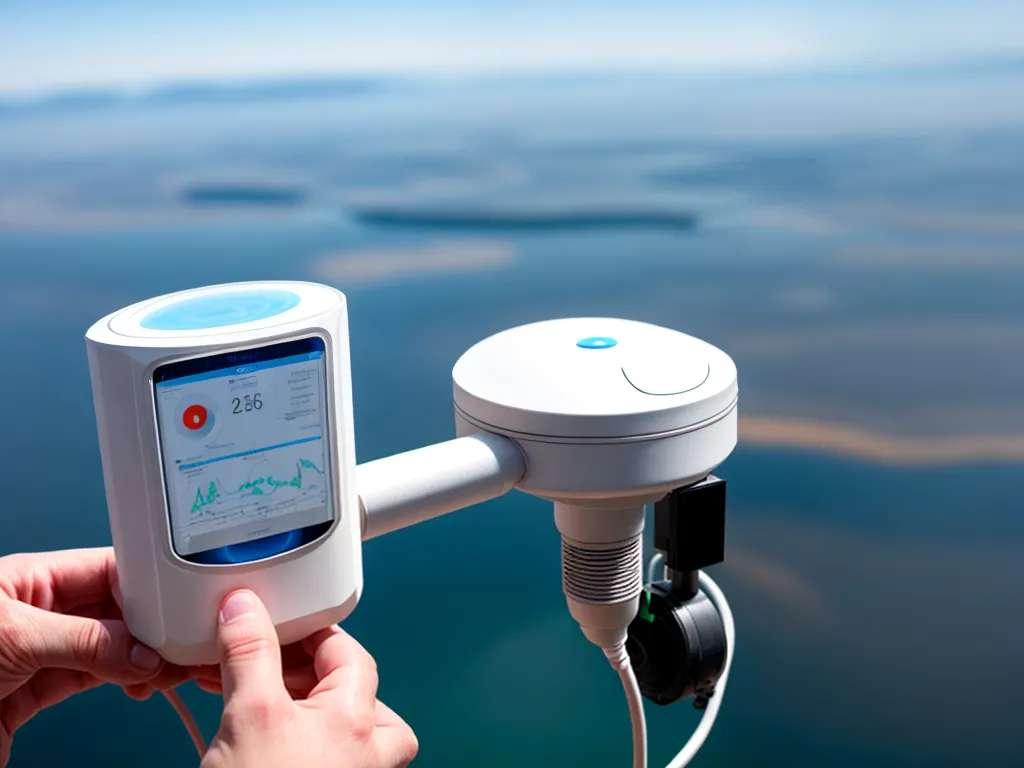
How IoT Sensors Monitor Air and Water Quality
Introduction
Environmental pollution is a growing concern across the globe. Monitoring air and water quality is crucial to understand pollution levels and take necessary action. IoT sensors play a vital role here by generating real-time data on various pollution parameters. In this article, I will discuss how IoT sensors are used to monitor air and water quality.
How IoT Sensors Monitor Air Quality
Some of the key air quality parameters that IoT sensors can monitor include:
Particulate Matter (PM2.5 and PM10)
Particulate matter refers to tiny particles suspended in the air that can cause health issues. PM2.5 particles are 2.5 microns or smaller in size while PM10 particles are 10 microns or smaller. IoT particulate matter sensors use laser scattering to estimate the concentration of PM2.5 and PM10. They can monitor both indoor and outdoor environments.
Volatile Organic Compounds (VOCs)
VOCs are emitted by paints, cleaning agents, fuels, and other products. Prolonged VOC exposure can irritate the eyes, nose and throat. VOC sensors detect the presence of gases like benzene, formaldehyde, toluene etc. Optical and electrochemical sensors are commonly used.
Carbon Monoxide
Carbon monoxide is a poisonous gas produced by incomplete combustion. Carbon monoxide sensors use electrochemical sensing to estimate CO levels. They can help reveal indoor air quality issues and leakage from combustion appliances.
Nitrogen Dioxide
Nitrogen dioxide is released from burning fuels and causes respiratory problems. IoT NO2 sensors use electrochemical cells to measure the gas concentration. They are often deployed in urban areas with heavy traffic.
Ozone
Ground level ozone is formed when pollution reacts with sunlight. It can worsen asthma and damage lung tissue. Ozone sensors measure ozone levels using metal oxide sensos or UV absorption sensors.
Temperature, Humidity and Pressure
Environmental sensors for temperature, humidity and pressure provide contextual data to correlate with pollution levels. They use digital sensors like thermocouples, capacitive chips etc.
How IoT Sensors Monitor Water Quality
Important water quality parameters tracked by IoT sensors include:
pH Levels
The pH indicates whether water is alkaline, neutral or acidic. pH sensors measure hydrogen ion concentration through electrochemical or optical sensing.
Turbidity
Turbidity is the cloudiness caused by suspended particles. Turbidity sensors have an infrared LED and detector to analyze light scattering.
Dissolved Oxygen
Dissolved oxygen is vital for aquatic life. Optical DO sensors use fluorescence quenching to find oxygen levels.
Conductivity
Conductivity indicates the presence of dissolved salts. Contact conductivity probes apply voltage to electrodes and measure current flow.
Nitrates and Phosphates
High levels of nitrates and phosphates cause algal blooms. IoT nutrient sensors use ion-selective electrodes or optical sensing.
Heavy Metals
Toxic heavy metals get into water through industrial discharge. Heavy metal sensors use techniques like anodic stripping voltammetry.
Chlorine
Sensors monitor chlorine from water treatment to prevent over-chlorination. Chlorine sensors rely on electrochemical or colorimetric detection.
Key Benefits of Using IoT Sensors
Some major benefits of using IoT sensors for air and water quality monitoring include:
-
Real-time tracking – IoT sensors provide live data instead of sporadic manual sampling.
-
Early warning – Instant alerts on crossing thresholds help mitigate issues proactively.
-
Data-driven decisions – Analyzing historical data enables better policymaking.
-
Scalability – Large sensor networks can be deployed across geographies.
-
Low cost – IoT sensors are affordable, have low power needs and easy maintenance.
-
Ease of access – Data can be accessed remotely through cloud platforms.
Challenges in Using IoT Sensors
However, there are some challenges to consider:
-
Sensor accuracy can vary under different conditions. Regular calibration is required.
-
Sensor networks need reliable connectivity and power.
-
Data security is crucial, especially for critical infrastructure.
-
Skilled staff is required to interpret and act upon the data generated.
-
Deployment and maintenance of large-scale sensor networks is non-trivial.
The Future of Air and Water Quality Monitoring
In the future, we can expect increased adoption of IoT sensors for environmental monitoring. Here are some likely advancements:
-
Better sensor accuracy with multi-parameter monitoring.
-
Integration with satellites, drones and robotics for more comprehensive data.
-
AI-powered analytics for predictive capabilities.
-
Blockchain integration for foolproof data security and traceability.
-
Greater democratization through DIY sensors and participatory monitoring.
-
Development of smart environmental digital twins for cities.
By leveraging IoT-based air and water quality monitoring, we can get deeper insights into pollution issues and safeguard public health. However, a clear strategy is necessary to reap the full benefits of this technology.












